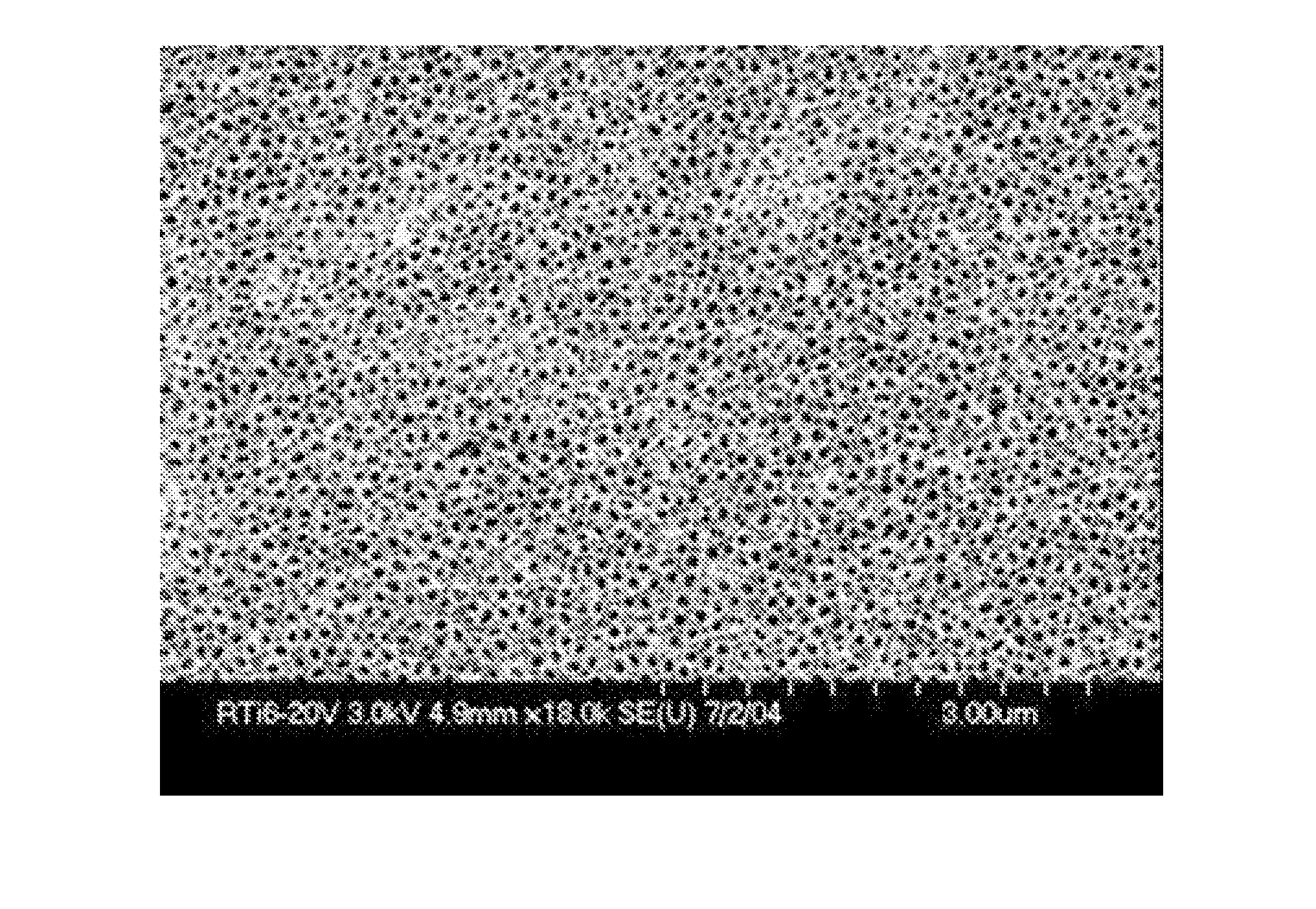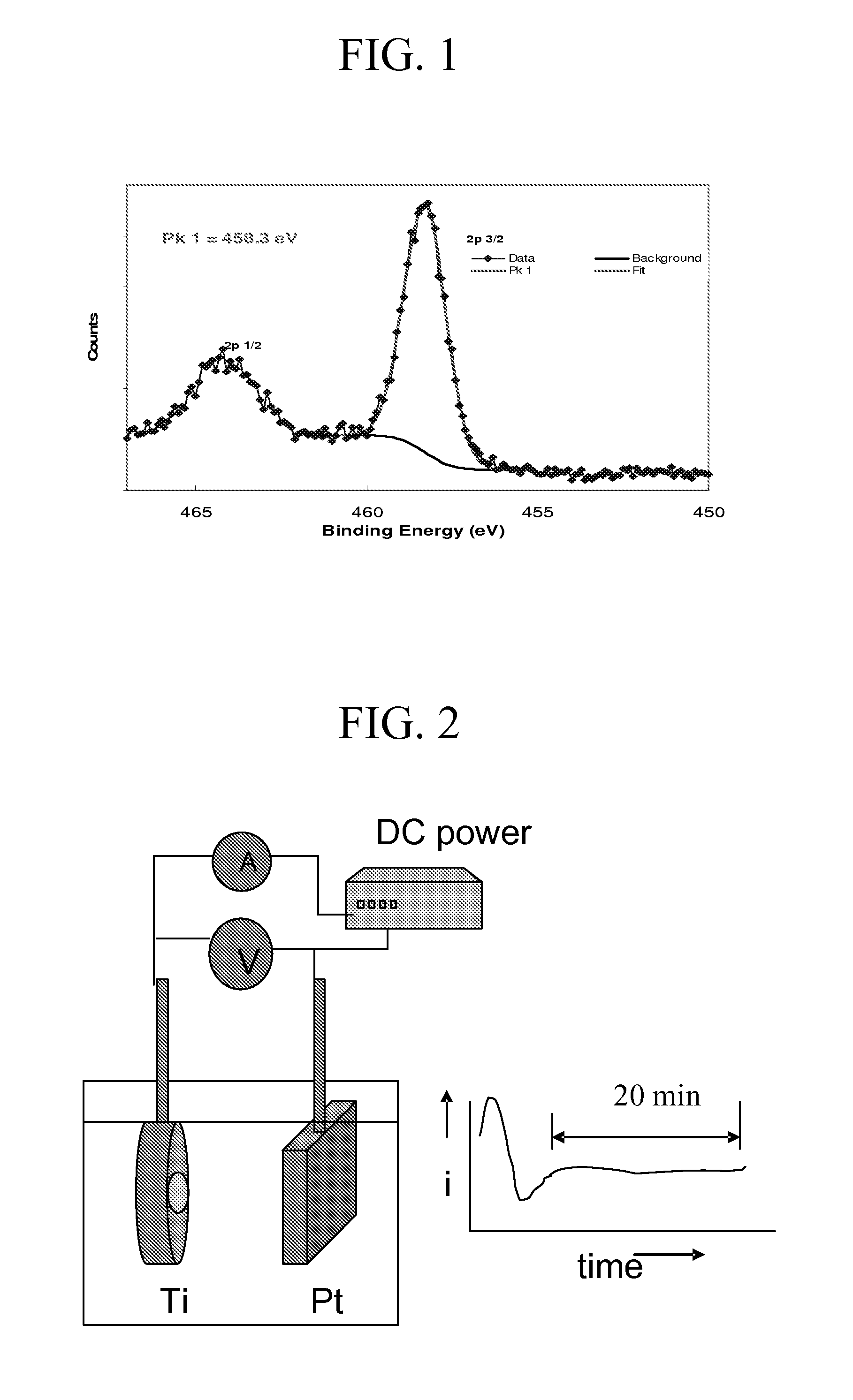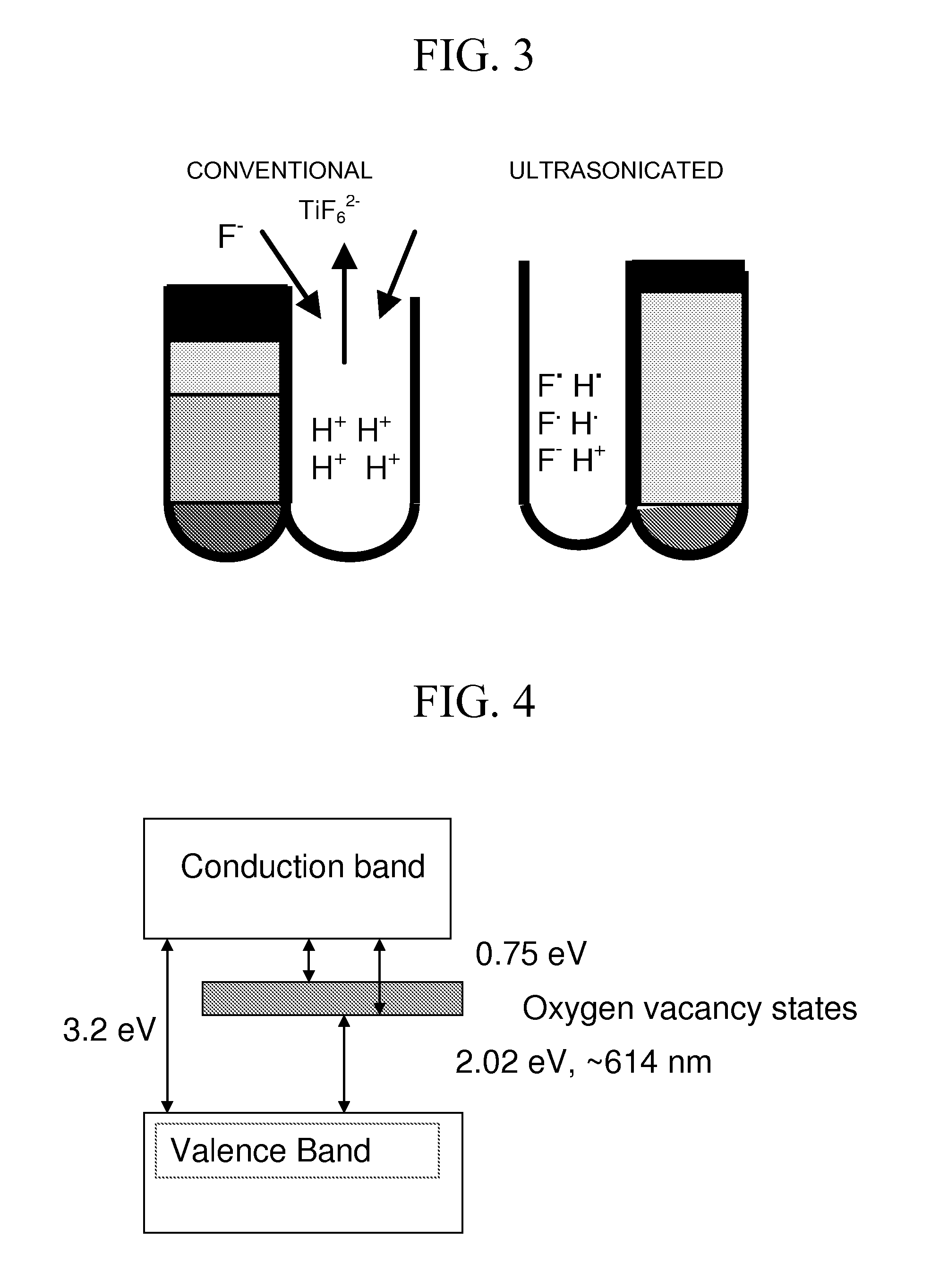Preparation of nano-tubular titania substrates having gold and carbon particles deposited thereon and their use in photo-electrolysis of water
a technology of nanotubular titania and titanium dioxide, which is applied in the direction of electrochemical machining apparatus, crystal growth process, energy input, etc., can solve the problems of agglomeration of nanoparticles, poor control of coating parameters, and low mechanical bond strength between glass substrate and tiosub>2 /sub>coating
- Summary
- Abstract
- Description
- Claims
- Application Information
AI Technical Summary
Benefits of technology
Problems solved by technology
Method used
Image
Examples
example 1
Formation of Nanotubular Titanium Dioxide Layer
[0133]An exemplary nanotubular structure was formed as follows:
[0134]Step 1: A Ti metal surface was cleaned using soap and distilled water and further cleaned with isopropyl alcohol.
[0135]Step 2: The Ti material was immersed in an anodizing solution, as described below, at room temperature. Various combinations of solutions can be employed in order to incorporate doping elements such as nitrogen, phosphorous etc. For example 0.5 M H3PO4+0.14 M NaF solution can be used for incorporating P atoms, and 0.5-2.0 M Na(NO3)+0.14 M NaF solution or a 0.5-2.0 M NH4NO3+0.14 M NH4F with pH 3.8-6.0 can be used for incorporating N atoms. Combinations of 0.5 M H3PO4+0.14 M NaF+0.05-1.0 M Na(NO3) can also be used.
[0136]Step 3: A direct current (DC) power source, which can supply 40 V of potential and support 20 mA / cm2 current density, was connected to the Ti material and a platinum foil (Pt rod / mesh) having an equal or larger area of the Ti surface. The...
example 2
Production of anodized Titanium templates
[0141]Titanium discs of diameter 16 mm and thickness 0.2 mm (0.2 mm thick, ESPI-metals, Ashland, Oreg., USA) were cleaned by sonication in acetone, isopropanol and methanol respectively and then rinsed in deionized water. The dried specimens were placed in a Teflon holder (from Applied Princeton Research, Oak Ridge, Tenn.) exposing only 0.7 cm2 of area to the electrolyte for anodization. The solution of 0.5 M H3PO4+0.14 M NaF was used for anodization, conducted at room temperature under a voltage of 20 V for 45 minutes with constant mechanical stirring. The morphologies of the resulting nano-porous titanium oxide were studied using a Hitachi S-4700 field emission scanning electron microscope (FESEM) and Shimadzu UV-VIS photospectrometer.
example 3
Anodization of Titanium in Ethylene Glycol / Glycerol Organic Solvents
[0142]First, anodized titanium templates were prepared. Titanium discs having 16 mm diameters and a thickness of 0.2 mm (0.2 mm thick, ESPI-metals, Ashland, Oreg., USA) were cleaned by sonicating in acetone, isopropanol, and methanol respectively, and then rinsed in deionized water. The dried specimens were then placed in a Teflon holder (from Applied Princeton Research, Oak Ridge, Tenn.) exposing only 1 cm2 of area to the electrolyte for anodization.
[0143]Anodization was done in two types of organic solvents. The first was glycerol based and other was ethylene glycol based. The following combination of electrolytes were used:
[0144](a) 0.5 wt.% NH4F & 8.75 wt.% Ethylene Glycol in Glycerol.
[0145](b) 0.5 wt.% NH4F & 27.5 wt.% Ethylene Glycol in Glycerol.
[0146](c) 0.4 wt.% NH4F in Ethylene Glycol.
[0147]The anodization was done by ramping the potential to 20V at a rate of 1V / s after which the potential was kept constant...
PUM
| Property | Measurement | Unit |
|---|---|---|
| pore diameter | aaaaa | aaaaa |
| band gap | aaaaa | aaaaa |
| thickness | aaaaa | aaaaa |
Abstract
Description
Claims
Application Information
 Login to View More
Login to View More - R&D
- Intellectual Property
- Life Sciences
- Materials
- Tech Scout
- Unparalleled Data Quality
- Higher Quality Content
- 60% Fewer Hallucinations
Browse by: Latest US Patents, China's latest patents, Technical Efficacy Thesaurus, Application Domain, Technology Topic, Popular Technical Reports.
© 2025 PatSnap. All rights reserved.Legal|Privacy policy|Modern Slavery Act Transparency Statement|Sitemap|About US| Contact US: help@patsnap.com



